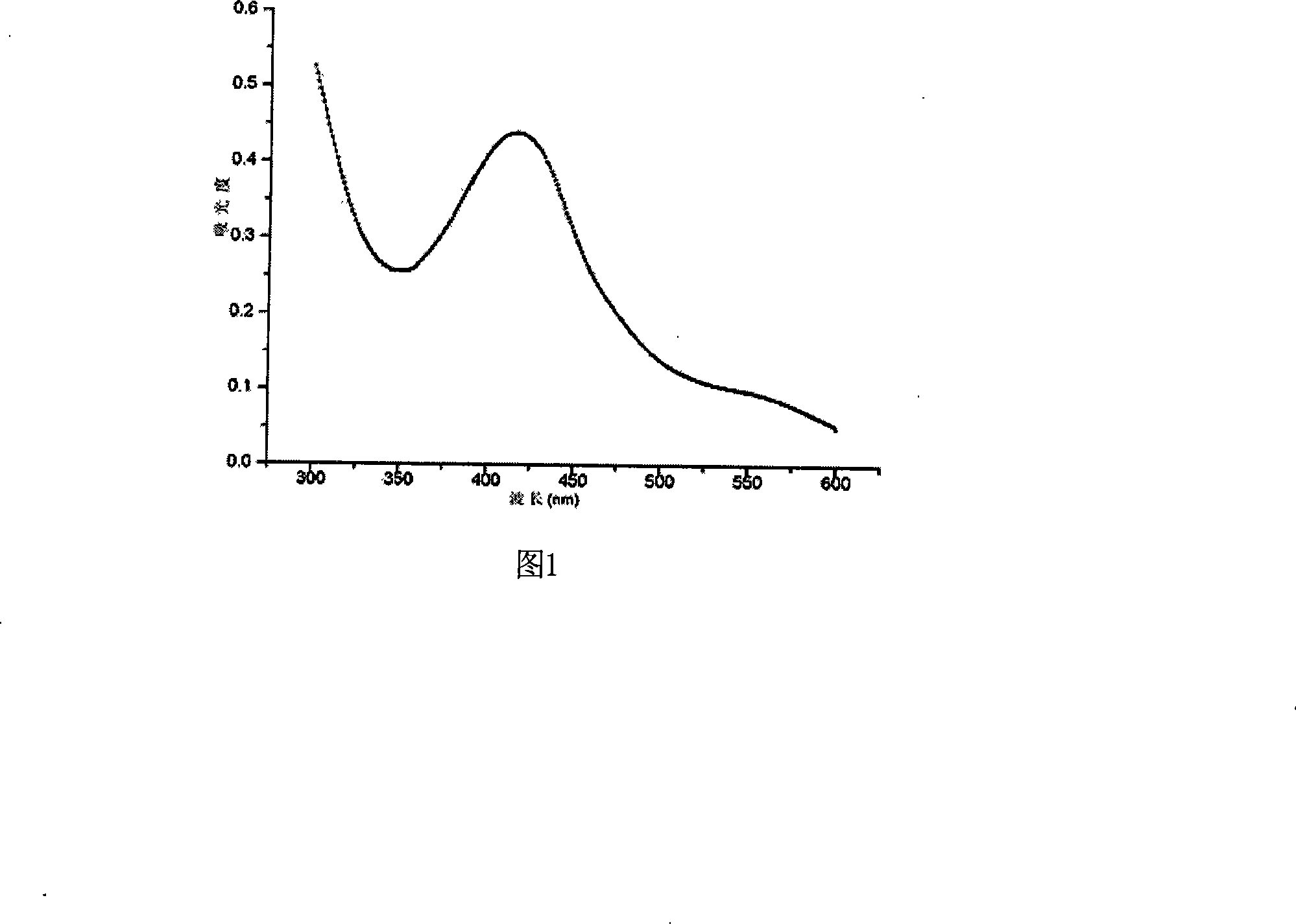Monascus mutant and method for preparing flavochrome by fermenting the same
A technology of mutant strains and Monascus, which is applied in the field of Monascus mutant strains and their fermentation to obtain yellow pigment, which can solve the problems of low color tone, low color value of Monascus yellow pigment, and low efficiency.
- Summary
- Abstract
- Description
- Claims
- Application Information
AI Technical Summary
Problems solved by technology
Method used
Image
Examples
Embodiment 1
[0014] Example 1: Mutagenesis of strains and screening of mutant strains.
[0015] The Monascus anka strain was inoculated on the slant of wort agar (10% wort powder with 10% sugar content, 2% agar) slant. After culturing at 31°C for 2-3 days, rinse the bacterial cell (moss) on the slant with 5 mL of normal saline. Disperse by glass beads and filter with sterile lens cleaning paper to make 1×10 spores 5 Pieces / mL suspension. Under a 15W ultraviolet lamp, irradiate at a distance of 30cm, while magnetically stirring, spread the plate (wort agar plate containing a certain concentration of lithium chloride) under red light, and cultivate in the dark. After culturing for 2-3 days, rinse the bacteria (moss) on the slope of the strain with 5 mL of normal saline, break it up with glass beads, and filter with sterile lens paper to make 1×10 spore 5 Pieces / mL suspension. Take a certain amount of spore suspension, add a certain amount of diethyl sulfate to make a certain concentration, shake...
Embodiment 2
[0022] Example 2: Selection of pH for yellow pigment fermentation production
[0023] According to the method described in Example 1, the spore suspension of Monascus anka mutant MYM2 was inoculated into a fermentation medium. The composition of the fermentation medium was as follows: corn flour 70g / L, sodium nitrate 30g / L, FeSO 4 .7H 2 O 0.01g / L, CaCl 2 0.1g / L, KH 2 PO 4 5g / L, the initial pH of the medium is 2.0, 3.0, 3.5, 4.0, 4.5, 5.0, 6.0. The culture condition is 31℃ and 200r / min shaking culture for 6-7 days. After the fermentation broth is centrifuged, the mycelium is extracted with an equal volume of 70% ethanol for one hour. The supernatant is centrifuged at 410nm and 510nm with a UV spectrophotometer The absorbance was measured, and the results are shown in Table 3. Table 3 shows the effect of different pH on the hue of monascus pigment. The results showed that the initial pH value of the culture medium is 3-4..5, which is most suitable for the metabolic formation of yell...
Embodiment 3
[0026] Example 3: Selection of nitrogen source for yellow pigment fermentation production
[0027] According to the method described in Example 2, the spore suspension of Monascus anka mutant MYM2 was inoculated into a fermentation medium. The components of the fermentation medium were as follows: corn flour 70g / L, nitrogen source 30g / L, FeSO 4 .7H 2 O 0.01g / L, CaCl 2 0.1g / L, KH 2 PO 4 5g / L. Corn steep liquor, sodium nitrate, peptone tryptone, casein peptone, yeast extract, urea, ammonium oxalate, ammonium sulfate, ammonium nitrate and triammonium citrate are used as organic and inorganic nitrogen sources. The culture conditions were 25°C and 160r / min for 10 days. After centrifugation of the fermentation broth, the mycelium was extracted with 70% ethanol in equal volume for 1 hour. After centrifugation, the supernatant was subjected to UV spectrophotometer at 410nm and 510nm to detect the absorbance . The results are shown in Table 4. Table 4 is an experiment with mixed nitrogen s...
PUM
 Login to View More
Login to View More Abstract
Description
Claims
Application Information
 Login to View More
Login to View More - R&D
- Intellectual Property
- Life Sciences
- Materials
- Tech Scout
- Unparalleled Data Quality
- Higher Quality Content
- 60% Fewer Hallucinations
Browse by: Latest US Patents, China's latest patents, Technical Efficacy Thesaurus, Application Domain, Technology Topic, Popular Technical Reports.
© 2025 PatSnap. All rights reserved.Legal|Privacy policy|Modern Slavery Act Transparency Statement|Sitemap|About US| Contact US: help@patsnap.com

